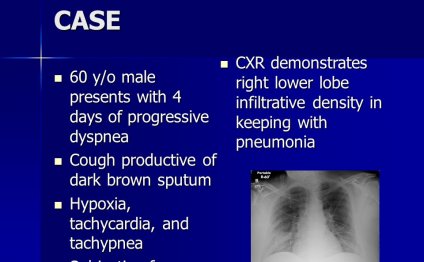
Medical case Study Examples
Advanced training pharmacists in the field of diabetes work collaboratively with patients’ medical providers, usually in major attention configurations or in close proximity into providers’ techniques. They assist to integrate the pharmaceutical, medical, knowledge/ guidance, and direct patient treatment tasks necessary to fulfill customers’ individual self-management and diabetes attention needs.
Patient education and self-management behavioral modification are underpinnings of pharmaceutical attention, and not only as they straight relate solely to the utilization of medications. Pharmacists, specifically those who find themselves certified diabetes educators (CDEs), often provide diabetes clients with training not only on medicines, but also from the general illness state, diet, physical exercise, decision-making abilities, psychosocial adaptation, problem avoidance, goal setting techniques, buffer quality, and cost dilemmas.
In addition to these considerable training obligations, advanced rehearse pharmacists that Board Certified–Advanced Diabetes Managers (BC-ADMs) perform a broadened part that encompasses condition condition administration. Including performing clinical tests and limited real exams; recognizing the need for extra attention; making recommendations as required; purchasing and interpreting certain laboratory tests; integrating their pharmacy patient treatment plans into clients’ complete health care programs; and entering records on client maps or carrying-out other styles of penned interaction with customers’ health care bills providers. Based state laws and physician-based protocols, some advanced level rehearse pharmacists can prescribe and adjust medicines separately or after assessment with prescribing physicians.
The clinical tasks of BC-ADM pharmacists aren't completed independent of referring, collaborative practitioners. Rather, they have been complementary to and provide to improve the diagnostic, complex actual assessment, and administration abilities of health providers.
These research study illustrates the pharmacotherapeutic difficulties of diabetes along with other comorbidities, that could trigger prospective drug-drug and drug-disease communications. Even though it doesn't provide detail by detail approaches to such issues, this instance does explain the process of client treatment and issue resolution as approached by advanced training pharmacists.
Case Presentation
B.L. is a 58-year-old white lady who has been known the pharmacist clinician for pharmacotherapy assessment and diabetes administration. The woman numerous medical ailments include type 2 diabetes identified in 1995, hypertension, hyperlipidemia, asthma, coronary artery disease, persistent peripheral edema, and longstanding musculoskeletal discomfort secondary to an automobile accident. Her medical history includes atrial fibrillation with cardioversion, anemia, leg replacement, and several emergency room (ER) admissions for asthma.
B.L.’s diabetes is becoming treated with a premixed preparation of 75per cent insulin lispro protamine suspension with 25per cent insulin lispro preparation (Humalog 75/25), 33 devices before break fast and 23 devices before supper. She states she occasionally “takes more” insulin whenever she notes large blood sugar readings, but she's got maybe not been instructed in the usage of an insulin adjustment algorithm.
Her other routine medicines are the fluticasone metered dosage inhaler (Flovent MDI), two puffs two times a day; salmeterol MDI (Serevent MDI), two puffs twice a day; naproxen (Naprosyn), 375 mg twice a day; enteric-coated aspirin, 325 mg daily; rosiglitazone (Avandia), 4 mg daily; furosemide (Lasix), 80 mg each and every morning; diltiazem (Cardizem CD), 180 mg day-to-day (per cardiologist consult); lanoxin (Digoxin), 0.25 mg day-to-day (per cardiologist consult); potassium chloride, 20 mEq everyday; and fluvastatin (Lescol), 20 mg at bedtime. Medications she's already been prescribed to take “as needed” feature sublingual nitroglycerin for upper body pain (has not been required in past times month); furosemide, extra 40 mg later on inside time if required for inflammation (of many times the extra dosage is needed); and albuterol MDI (Proventil, Ventolin), two to four puffs every 4–6 hours for difficulty breathing. She denies usage of nicotine, alcoholic beverages, or leisure drugs; doesn't have known medicine allergies; and it is up-to-date on her immunizations.
B.L.’s chief grievance now is increasing exacerbations of asthma therefore the dependence on prednisone tapers. She reports that during the woman final round of prednisone treatment, the girl blood glucose readings increased to the product range of 300–400 mg/dl despite large decreases in her carbohydrate consumption. She reports that she boosts the frequency of her fluticasone MDI, salmeterol MDI, and albuterol MDI to four to five times/day whenever she's a flare-up. But her spouse has-been unemployed for over a-year, and their just income source is her personal safety check. For that reason, she has already been struggling to choose the fluticasone or salmeterol so features only been taking prednisone and albuterol for present acute asthma exacerbations.
B.L. states eating three dishes on a daily basis with a snack between dinner and bedtime. Her biggest dinner is supper. She states that she matters her carbohydrate portions at each dinner and it is “watching just what she consumes.” She's perhaps not had the oppertunity to exercise regularly for all weeks considering bad weather and her symptoms of asthma.
The memory printout from her blood glucose meter when it comes to past thirty day period reveals a complete of 53 tests with a mean blood glucose of 241 mg/dl (SD 74). With a premeal glucose target set at 70–140 mg/dl, there have been no readings below target, 8per cent within target, and 91% above target. In contrast, her outcomes through the same thirty days 12 months ago averaged 112 mg/dl, with a higher of 146 mg/dl and the lowest of 78 mg/dl.
Physical Test
B.L. is well-appearing but overweight and it is in no severe distress. A restricted real exam shows:
- Body Weight: 302 pound; level 5′1″
- Hypertension: 130/78 mmHg utilizing a large adult cuff
- Pulse 88 bpm; respirations 22 per minute
- Lungs: clear to auscultation bilaterally without wheezing, rales, or rhonchi
- Lower extremities +1 pitting edema bilaterally; pulses good
B.L. reports that on the days this lady legs swell up many, she actually is active as well as in an upright place during the day. Inflammation gets worse during the day, but because of the after that morning they have been “skinny again.” She states that she helps make the choice to simply take an additional furosemide tablet if the woman inflammation is exorbitant and painful around lunch time; taking the diuretic later on within the day prevents her from sleeping due to nocturnal urination.
Lab Results
Share this Post
Related posts
Case Study Medical
Overview: This health research compares three opportunities for defecation by measuring stomach pressure and anorectal position…
Read MoreMedical Case Manager
Providers for Catastrophic Injuries and Elaborate Pain Circumstances Paradigm Outcomes stands apart from old-fashioned situation…
Read More
















